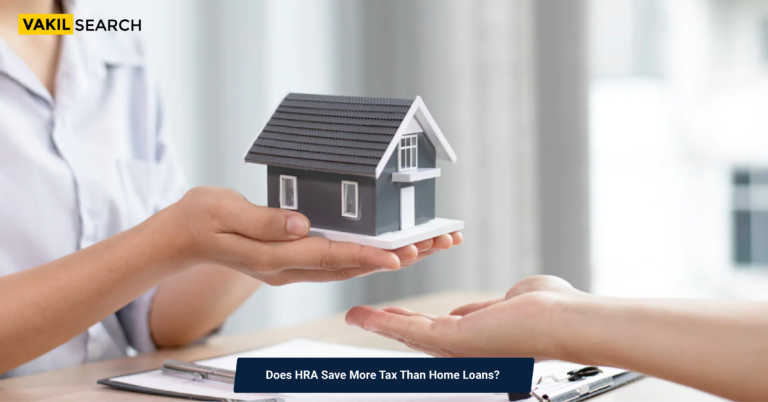To claim House Rent Allowance (HRA) exemption, you need to provide certain documents and follow specific procedures. This article explains the process of claiming HRA exemption and provides helpful tips to ensure that you receive the full tax benefits you are entitled to.
Introduction
House Rent Allowance or HRA is a significant part of an employee’s salary, provided by employers to help with their rental expenses. Claiming House Rent Allowance exemption is an effective way for employees to lower their tax burden and save money. This blog will cover the eligibility criteria, necessary documentation, and steps to follow for claiming HRA exemption. Additionally, it will address common errors to avoid and offer tips to maximize the benefits of HRA. By the end of this blog, you will have a better understanding of how to claim HRA exemption and save on taxes.
Eligibility for House Rent Allowance Exemption
To claim House Rent Allowance exemption, an employee must meet certain criteria. The employee should receive HRA as a part of their salary package, and they should be paying rent for a residential accommodation. The rent must exceed 10% of the employee’s salary to be eligible for exemption. The amount of HRA exemption is calculated based on the employee’s salary, rent paid, and the city of residence.
The exemption amount is the minimum of the following three calculations:
- Actual HRA received from the employer
- Rent paid minus 10% of the employee’s salary
- 50% or 40% of the employee’s salary, depending on the city of residence.
The exemption reduces the employee’s taxable income, thereby lowering their tax liability. It’s important to note that employees who do not receive HRA as a part of their salary package cannot claim House Rent Allowance exemption.
Documents Required for Claiming HRA Exemption
House Rent Allowance exemption is an allowance provided by an employer to an employee to meet their rental expenses. To claim exemption on HRA, employees must provide certain documents as proof of their rent payments. Here are the documents required for claiming HRA exemption:
- Rent Receipts: To claim House Rent Allowance exemption, employees must provide rent receipts for the rent they pay to their landlord. The rent receipts should contain the name and address of the landlord, the rent amount, and the period for which the rent is paid. Employees must obtain rent receipts from their landlord on a monthly basis.
- Rental Agreement: Employees must provide a rental agreement as proof of their tenancy. The rental agreement should contain the name and address of the tenant and landlord, the rent amount, the duration of the lease, and other terms and conditions of the tenancy. Employees should ensure that the rental agreement is signed by both the tenant and the landlord.
- PAN of the Landlord: Employees must provide the PAN (Permanent Account Number) of their landlord if the annual rent paid is more than ₹ 1,00,000. If the landlord does not have a PAN, a declaration to this effect from the landlord should be submitted.
Once the required documents are collected, employees should submit them to their employer to claim the HRA exemption. Employers may ask for these documents at the end of the financial year or periodically throughout the year. The deadline for submitting these documents may vary from employer to employer, but it is usually towards the end of the financial year. It is important for employees to submit the documents within the deadline to avoid any delays or complications in claiming the House Rent Allowance exemption.
“Simplify HRA deduction calculation with our online HRA calculator. Accurate HRA exemption in seconds!”
Steps to Claim House Rent Allowance Exemption
To claim HRA exemption, employees must follow the following steps:
- Determine the Amount of HRA Exemption: The amount of HRA exemption is calculated as the minimum of the following three amounts: actual HRA received from the employer, 50% of the basic salary for employees in metro cities, or 40% of the basic salary for employees in non-metro cities.
- Obtain Rent Receipts and Rental Agreement: As discussed in the previous section, employees must collect rent receipts and rental agreements as proof of their rent payments.
- File Income Tax Returns: Employees must file their income tax returns and claim the HRA exemption while doing so. While filing the returns, employees need to fill in details such as the amount of HRA received, the amount of rent paid, and the location of the rented house.
- Submit Form 10BA: If the rent paid by the employee exceeds ₹ 1 Lakh per annum, then they must also submit Form 10BA along with their income tax returns. This form declares that the rented property is the primary residence of the employee, and that they have not claimed any other deduction on the rent paid.
- Communicate With the Employer: Employees should communicate with their employer regarding the amount of HRA exemption they are eligible for, and the deadline for submitting rent receipts and rental agreements. Employers are required to deduct TDS (Tax Deducted at Source) on the salary of their employees, including HRA. Therefore, it is essential that employees communicate with their employer and provide them with the necessary documents to ensure that the correct amount of TDS is deducted.
To communicate with the employer about HRA exemption, employees can approach the HR or accounts department of their company. They can also send an email to their employer requesting for details on the amount of HRA exemption and the deadline for submitting the required documents. Employers are legally obligated to provide the necessary information to their employees regarding their HRA exemption, so employees can expect prompt replies from their employers.
Conclusion
Vakilsearch offers an HRA calculator that helps employees calculate their HRA tax benefits based on their salary structure, rent paid, and city of residence. With precise calculations and easy accessibility from any location with an internet connection, this user-friendly tool saves time and effort. Furthermore, it is affordable and free of charge, making it an excellent option for all employees seeking to determine their House Rent Allowance exemption tax benefits accurately.










